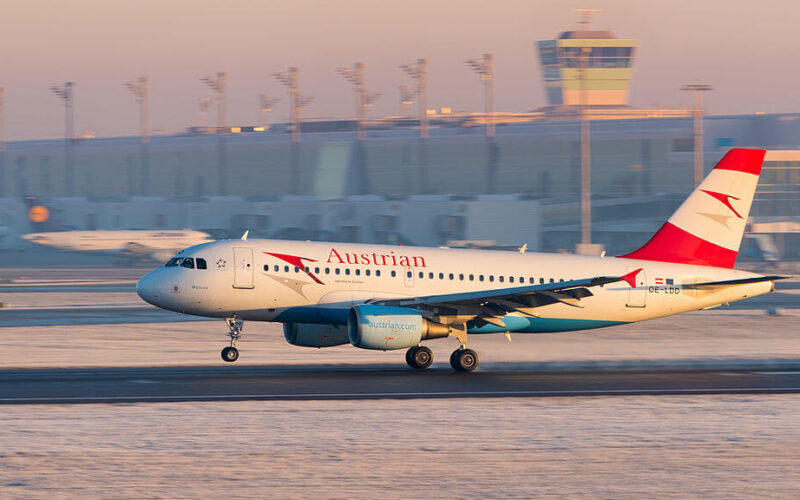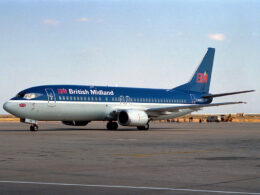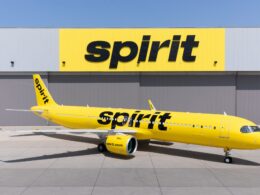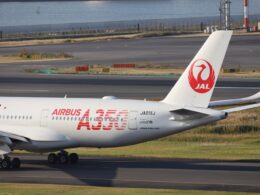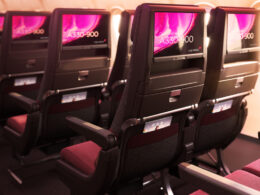Battle of Vienna 2019: Low-cost versus Austrian Airlines
As Lufthansa (LHAB) (LHA) group announced its Q3 2019 results on November 7, 2019, they were fairly mixed – during the quarter, the group improved slightly, but year-to-date results were disappointing as profits crumbled by more than 40%. Even the short-term outlook was not great – the German airline group announced that due to “pricing pressures in Europe”, Network airlines, including Austrian Airlines, will grow only moderately during the winter 2019/2020 season.
And the issue is clear that the group is crumbling against low-cost carriers, as easyJet, Ryanair and Wizz Air have gained significant footholds in the group’s hubs, including Vienna International Airport (VIE). In fact, the no-frills airlines gained so much ground, that Austrian Airlines’ own Chief Executive Officer, Alexis von Hoensbroech, has publicly slammed low-cost carriers and, specifically, Ryanair’s CEO Michael O’Leary.
“Mr. O’Leary is wrong if he thinks, that he can overtake us here in Vienna,” Hoensbroech ended his speech, directly aiming at what has seemingly become a never-ending migraine for Austrian Airlines. So much so, that the company issued a press release, the title of which states that the carrier is re-aligning “operations to face glut of budget airlines”. Budget cuts, including 700-800 employees facing dismissals, are coming as Austrian Airlines aims to save around $99.5 million (€90 million) per year starting 2021 by improving efficiency and productivity, according to the statement.
Yet just a year ago, in 2018, Austrian Airlines set a new passenger record, including adjusted Earnings before interest and taxes (EBIT) of $91.8 million (€83 million). Now, the airline “cannot rule out the possibility of reporting a loss for the entire 2019 financial year,” said the carrier’s Chief Financial Officer, Wolfgang Jani.
So, who is attempting to take down Austrian Airlines’ flag in Vienna International Airport (VIE)?
Ever increasing low-cost carrier presence at Vienna
For the past two years, low-cost carriers have massively expanded their share in the airport. Undoubtedly, Austrian Airlines is still the number one airline by market share – in 2018, 47.5% of passengers traveled in or out of Vienna with Austrian’s aircraft, states data provided by Vienna International Airport. In 2017, the airline carried 48.4% of passengers from the airport. But the numbers can be quite deceitful. The airline pounced on the capacity gap left by the bankruptcies of airberlin and its Vienna-based subsidiary NIKI in 2017.
In 2012, Austrian Airlines began slowly losing market share in the airport, going from 50% to 49.5%, while NIKI upped its presence in the airport. Throughout the years, Austrian’s share diminished to 44.5% in 2016 before the aforementioned spike due to a capacity gap left by bankruptcies.
In 2014, the first trouble started brewing, as easyJet showed up with a point to prove.
The Orange contender
The British low-cost carrier started making strides in Vienna only a year later, in 2015, when it became the tenth biggest airline at VIE, carrying 336,154 passengers out of the total 22.7 million that have crossed the airport’s gates, amounting to a market share of 1.5%. Just three years later, easyJet carried 1.3 million passengers in 2018 (market share of 4.9%) – a traffic increase by 396% compared to 2015.
Throughout H1 2019, easyJet carried 624,511 passengers (improvement of 5.2% compared to the same period last year), a market share of 4.3%.
Purple from the east
On January 11, 2018, Wizz Air announced that the low-cost carrier is establishing a base in Vienna – its first in the country – with one Airbus A320 aircraft and two A321 jets, offering 450,000 seats throughout 2018. Wizz Air’s first flight with a Vienna-based aircraft took off on June 14, 2018.
In its first year of operations, Wizz Air sold 444,578 seats – a market share of 1.6%. Yet the purple-bearing airline has a very ambitious growth plan in Vienna – to become the second biggest airline in the country in 2019 with a fleet of five new Airbus A320 aircraft with more than 2.2 million seats up for grabs from its base in VIE.
In H1 2019, Wizz Air increased its market share in Vienna International Airport to 6.4%, becoming the fourth biggest airline at the airport.
The Irishman disguised in Austrian clothing
When Laudamotion, a charter and business flights airline, took over Niki‘s operations in early-2018, events developed fairly quickly for the carrier to transform itself and become a headache for Austrian Airlines – already in H1 2019, Laudamotion became the second biggest airline in Vienna, having 8% of the market with 1.16 million passengers.
Looking at the bigger picture, it is clear why Austrian Airlines would begin realigning itself to “face glut of budget carriers”. In 2018, the market share of low-cost carriers in Vienna was 23.7%, in H1 2019 it had already risen to 31.8%.
And these are just the only three biggest low-cost carriers in the city – two of the International Airlines Group (IAG) (IAG) brands have also expanded their market share in the airport – while Vueling is withdrawing, LEVEL is overtaking the former’s presence. Vueling has decreased its passenger numbers in H1 2019 compared to the corresponding period in 2018 by 5.6%, while LEVEL has already gained a market share of 2.2%, as it transferred 320,863 passengers in the first half of 2019, whereas in H1 2018 it had zero passengers – LEVEL started serving Vienna on July 17, 2018.
Nevertheless, Wizz Air and Laudamotion are set to expand even further. The former will bring two additional Airbus A321 aircraft to Vienna – one is set to join the base on December 18, 2019, while the second one will come on July 1, 2020. In total, Wizz Air will have eight aircraft based at the Austrian capital, serving 34 routes from Vienna.
Laudamotion also announced impressive growth plans for Summer 2020. Initially, the Austrian low-cost carrier planned to have 16 (in Summer 2019 it had eight) aircraft based in Vienna during the summer. But a press release, issued on October 23, 2019, announced that Laudamotion has acquired three extra A320 family jets for the season.
“This further expansion in Vienna would not have been possible without the recent failure of Thomas Cook and Adria, which has increased the availability of second-hand A320 aircraft, and more importantly, A320 pilots, hundreds of whom have applied to join Lauda in recent days,” states the airline’s press release. Furthermore, the airline noted that both Eurowings and LEVEL will reduce the amount of aircraft they have based at Vienna by two and three, respectively.
“This rapid growth to over 10m passengers in just our 3rd year of operations means that Laudamotion is rapidly catching up to Austrian Airlines (who carry 14m passengers p.a.), and we expect to overtake Austrian Airlines and become Austria’s No.1 airline within the next 5 years,” said the airline’s Chief Financial Officer Andreas Fritthum.
All in all, Laudamotion plans to serve 81 routes to/from Vienna, tripling its capacity in just a year.
The sudden expansion of low-cost carriers in the past year at Vienna International Airport (VIE) is quite surprising. After all, VIE is not a secondary airport – low-cost carriers having so much presence at a primary airport is something unusual, especially in Europe. Yet at the same time, it is no surprise at all, as the airport itself launched a comprehensive incentive program to spur growth at Vienna International Airport.
Inviting the devil to dinner
On August 22, 2017, Flughafen Wien, the company that manages Vienna International Airport, announced an incentive program starting January 1, 2018, “to improve growth perspectives for airlines at the Vienna Airport site and safeguard the future of the flight hub,” states the press release.
The airport management company aims to increase the number of destinations served as well as frequencies to some of the destinations out of VIE. New destinations, which Flughafen Wien describes as a route “which has not been served from Vienna Airport for the past two flight schedule periods or for at least 12 months by a direct flight,” will receive significant discounts for four years. During the first year of operations, the airline will not have to pay any landing fees at all, with the refund lowering to 80% in the second year, 60% in the third and 40% in the fourth year.
Meanwhile, if an airline increases frequencies to Eastern European or Intercontinental airports, the carrier will also receive a discount on the landing fees. During the first year of operations, the airport will offer a 60% discount on Eastern European routes, which will decrease to 40% throughout the second year. The company defines increased frequencies as the following:
“If an airline introduces a new route that has already been served by another airline from Vienna or increases the number of frequencies to a destination served by this airline this shall be considered an additional frequency. The regular/scheduled frequencies to this destination are compared with the respective flight schedule periods of the previous year.”
The increase in flights will be compared to the corresponding period last year.
A third incentive, called “High Frequency Incentive”, is also active, aimed to increase flights to destinations in Eastern Europe and intercontinental routes. If an airline serves a destination within Eastern Europe seven or 10 times a week, the landing fees will be reduced by 20%. If an airport is connected to VIE 14 times per week, the airline will receive a 30% discount, 21 times per week will equal to a 40% discount, while 28 frequencies per week will amount to a 50% reduction in landing fee expenses.
Finally, airlines can choose between a transfer and a volume incentive. Flughafen Wien will give airlines $1,379 (€1,250) for every 100 transferring passengers in Vienna, while for airlines that transfer between 750,000 and 1.75 million passengers per year, the airport will provide the following refunds:

Thus, the airport planted the seed for traffic to grow and seemingly, only low-cost carriers pounced on the opportunity. Flughafen Wien highlights that during 2019, new short/medium-haul routes were announced by six airlines, including Austrian Airlines – the full-service carrier introduced flights to Skyros, Greece (SKU), Rostock, Germany (RLG) and Brindisi, Italy (BDS). Meanwhile, LEVEL introduced six new routes, Laudamotion inaugurated 10, while Wizz Air now has eight new flight paths from Vienna. Air Arabia, a low-cost carrier from the Middle East, also introduced flights to Sharjah, United Arab Emirates (SHJ).
How has Austrian Airlines responded to the ever-increasing pressure from the no-frills airlines that aim to dethrone the carrier from its number one spot in Vienna?
Austrian Airlines response to low-cost carriers
First of all, it is clear that the airline is looking to primarily focus on its Vienna hub and abandon its bases elsewhere in the country. To do so, flights between Austria’s regional airports and Germany will be transferred to Lufthansa (LHAB) (LHA) , as the German airline will operate the flights using their own code, LH. This will allow Austrian Airlines to free up crew and aircraft, both of which will be transferred to Vienna when the bases are shut down, according to the airline.
But the aircraft itself is an additional problem that Austrian had to address – it operates a fleet of 16 De Havilland Canada Dash 8 Q400, planespotters.net data shows. The airline will replace the turboprops with 10 Airbus A320 aircraft, allowing for more flexibility and to reduce their costs, as the airline will reduce the complexity of its flight operations.
“The replacement of the aircraft and the closer cooperation with our sister company Eurowings enables us to bundle our fleet strength in Vienna,” said the company’s Chief Commercial Officer Andreas Otto. “We will not retreat a single millimeter and will maintain our premium strategy,” he added.
Regarding the cooperation with Eurowings, Austrian Airlines will wet-lease four Airbus A320 aircraft from January 2020 and will establish flights to five new destinations, two of which, namely flights to Birmingham, United Kingdom (BHX) and Zadar, Croatia (ZAD), are currently not served by any airline, providing the opportunity for Austrian Airlines to grab the incentives established by Flughafen Wien. But flights to Rome (FCO) and Barcelona (BCN) are heavily contested by low-cost carriers, as Laudamotion, Wizz Air, LEVEL and Vueling are all present on the routes from Vienna.
Nevertheless, wet leasing four A320 aircraft from Eurowings and marketing them as Austrian Airlines will provide the latter with more flexibility, yet at the same will be detrimental, if the configuration on Eurowings’ A320 jets will remain the same with basic economy, premium economy and business class represented onboard. Austrian Airlines Airbus A320 family aircraft is configured in two classes – economy and business.
Premium economy (or more legroom, as Eurowings calls it) allows the opportunity for the airline to generate extra ancillary revenue, reducing the pressure on yields. However, competing with the likes of Wizz Air and Laudamotion with business class present on board makes things a bit difficult. The extra associated costs with business class seats and, in turn, the reduction of available capacity on the aircraft, as a result of the business class seats, will not allow the two Lufthansa (LHAB) (LHA) group airlines to price accordingly and competitively against low-cost carriers.
But ensuring capacity is crucial for the future, not only for Austrian Airlines but for the competing low-cost carriers as well. When Flughafen Wien presented its H1 2019 results, one of the risks that the company is highlighted is the fact that Vienna International Airport (VIE) is running out of space. The airport plans to open a third runway, as “Vienna Airport will reach its capacity limits in the existing two-runway system after 2025,” argues the press release. Thus, not retreating a single millimeter, as Otto highlighted, is very important in order to ensure that in the short-term, the airline is able to maintain its dominant position in Vienna.
“Our long-term strategy remains in full force. We want to modernize Austrian Airlines and make it profitable and investment-ready,” said the CEO of Austrian Airlines Alexis von Hoensbroech. But the fight to do so might be long and bloody, with a looming price war that has already put a lot of pressure on the parent company of Austrian, Lufthansa (LHAB) (LHA) .





